A great packable and lightweight jacket can be one of the best items in your backpack for a number of reasons. From unexpected rain showers and a drop in cooler temperatures to a makeshift pack cover or even a pillow in a pinch, packable jackets are always good to have on hand. That’s why you should have several different kinds of packable jackets in your closet waiting to be packed for your next adventure.
Depending on where you live or when you plan to explore the outdoors, there are three kinds of jackets you should pick from. The first is a packable shell that is lightweight and just right to keep you dry during wet weather. The second is a down jacket with some sort of stuff sack to keep you warm when the temperature dips. Finally, the last kind of jacket that is nice to own and keep on hand is a combination of the two — a thermal waterproof packable jacket. Fortunately, we’ve rounded up the best options on the market at the moment all of which are worth taking along on any adventure.
Related Guides
Marmot Men’s Minimalist Component 3-in-1 Jacket
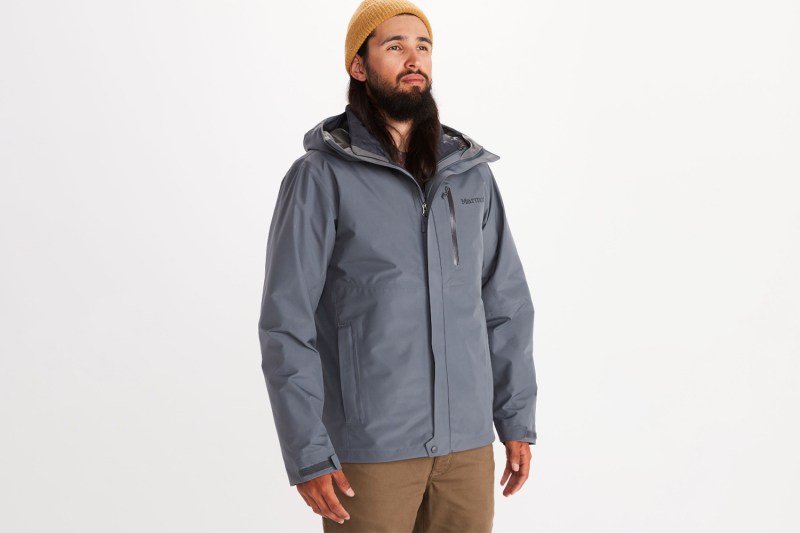
Marmot’s Minimalist 3-in-1 jacket is a packable workhorse. Made with Gortex-Paclite, two and a half layers of taped seams, and sealed zippers, you are guaranteed to stay dry in this waterproof and windproof jacket. The jacket also includes a second liner jacket that is insulating to keep you warm in cold, wet weather. However, when things start warming up, you can simply unzip the liner and remove it from the shell to cool off while staying dry. Though pricier, this jacket can be your all-in-one go-to for any trip or outdoor adventure you take off on.
The North Face Men’s Thermoball Triclimate Jacket
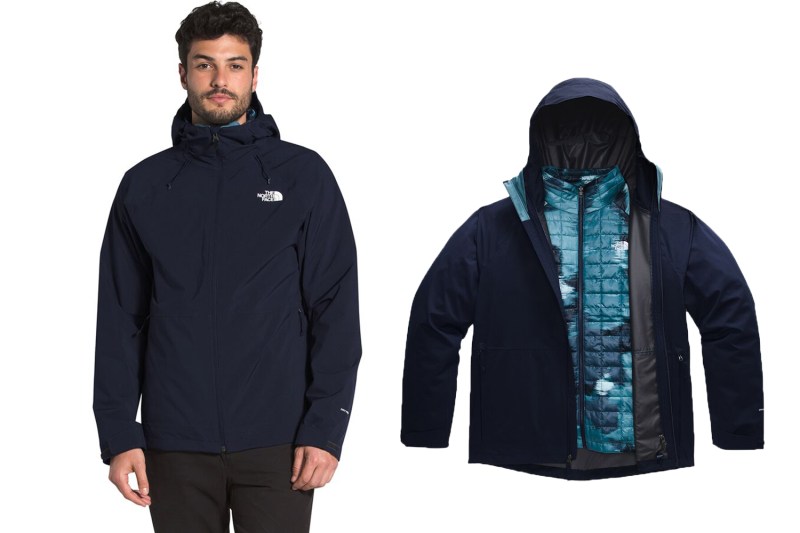
The Triclimate jacket by The North Face is another great all-in-one jacket to pack everywhere you go. The waterproof shell is insulated with a Thermoball synthetic material to keep you warm when you need it. With zippered pockets, a chest pocket, and water-tight seals on all of the zippers, you can rest assured that water will not leak in whether you are crossing a ridge or walking across town.
Patagonia Men’s Down Sweater Jacket
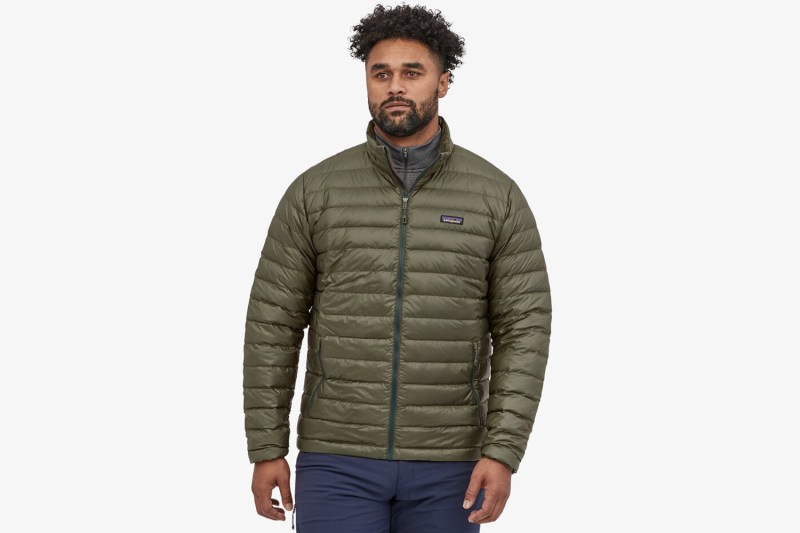
Patagonia’s Down Sweater jacket is a classic packable staple for anyone. The 800-fill down jacket is not waterproof, but it can be layered with a shell if need be. The level of warmth this jacket provides is suitable to myriad climates and is an incredibly versatile jacket. The lightweight and windproof jacket will keep you warm under almost any circumstance. Other features include an internal chest pocket, zippered pockets, and an adjustable cord to fit the jacket to your hips if need be. The jacket also comes with its own bag that it easily packs into so you can easily toss it into your backpack.
The North Face Men’s Apex Bionic 2 Jacket
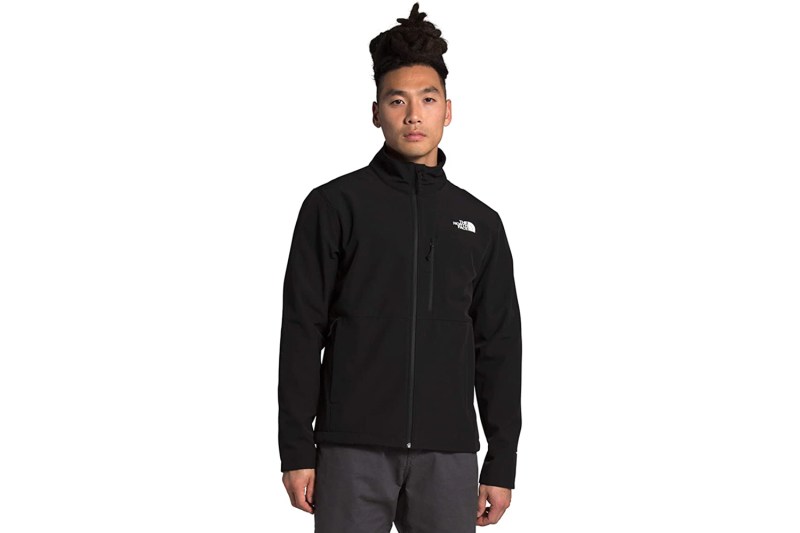
The Apex Bionic jacket is another great option to face many kinds of weather with. Though this soft-shell jacket won’t be the best pick for places with a lot of rain, it can certainly handle a passing shower. The water-resistant, windproof jacket is also breathable and stretches with your movements. It’s also made with a hem cinch cord. Together, the soft shell’s features are great for hiking or climbing among other activities in mild weather. It’s a great value option for a jacket under $200.
Patagonia Men’s Torentshell 3L Jacket
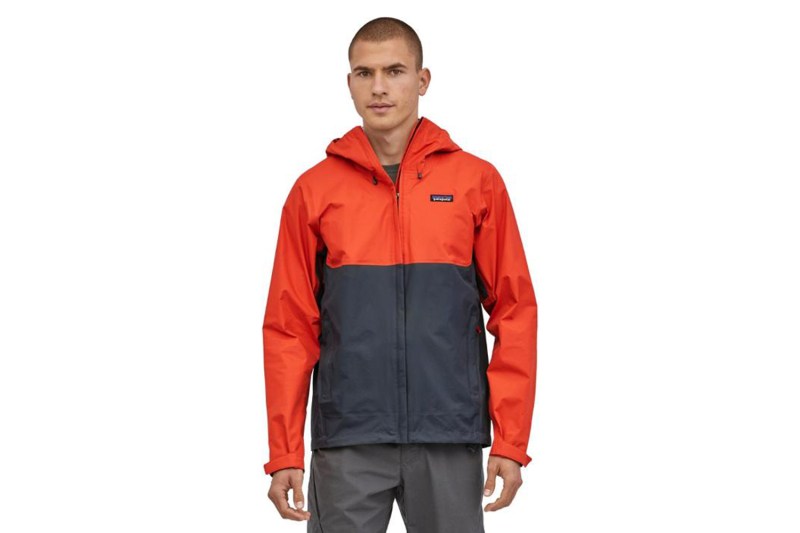
Patagonia’s Torentshell rain jackets are another classic staple. These basic raincoats work hard to keep you dry, but they can also be used as perfect layering pieces. The jacket consists of three layers of Patagonia’s most advanced waterproof fabric to last a long time. Though very waterproof, the jacket is also very breathable and includes two sealed-zipper underarm vents as well as a hem cinch cord. This allows you to control how much air is moving through the jacket so you can stay as cool as you need to. Naturally, the lightweight jacket also packs into its own bag as well.
REI Co-op Men’s XeroDry GTX Jacket
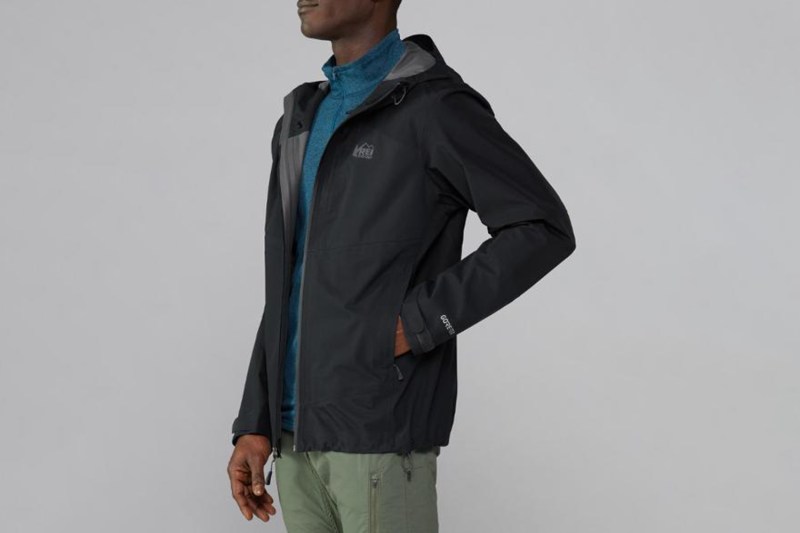
REI’s Co-op gear is worth noting for this spring season. REI’s XeroDry jacket uses two layers Gore-tex Paclite material to create this durable yet very lightweight shell. The breathable jacket will keep you dry when you need it most and easily packs down. Another added bonus is that the material of this jacket makes less noise than most rain jackets, which is a must when looking for wildlife. Like Patagonia’s Torentshell jacket, this raincoat is also designed with two core vents to let you cool off when you need to.
Outdoor Research Men’s Helium Rain Jacket

Like the other rain jackets, Outdoor Research’s Helium jacket is made to be very waterproof, windproof, and quite durable. Though the jacket is made with two and a half layers of material, the jacket is lighter than ever. It features elastic at the wrists and a hem cord to seal the water out as well. Other details include a carabiner loop and key clip as well as reflective logos which are never a bad addition. The rain jacket ultimately stuffs into its own chest pocket.
Patagonia Men’s Storm Racer Jacket
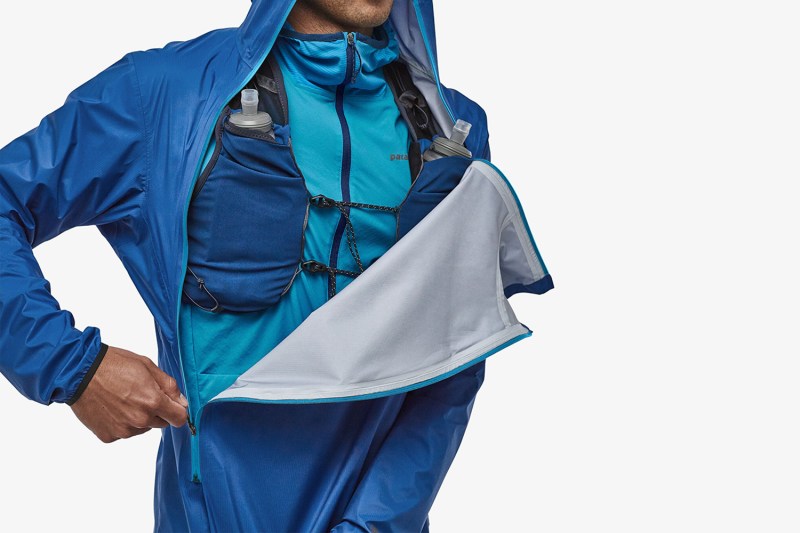
The Storm Racer jacket is one of the most advanced yet simple technical garments that Patagonia makes. The simple raincoat is designed to keep you and your gear dry when you are hiking or trail running. Designed to fit over a running vest outfitted with water bottles or a backpack, the jacket easily slips over either. The pull-on style features two zippers that angle down from the neckline. These allow you to access your water or your backpack anytime you need to. The jacket fits slim to keep you dry and is incredibly lightweight. When you are done using it, the jacket simply packs into its own pocket for easy storage.
The North Face Men’s Class V Fanorak
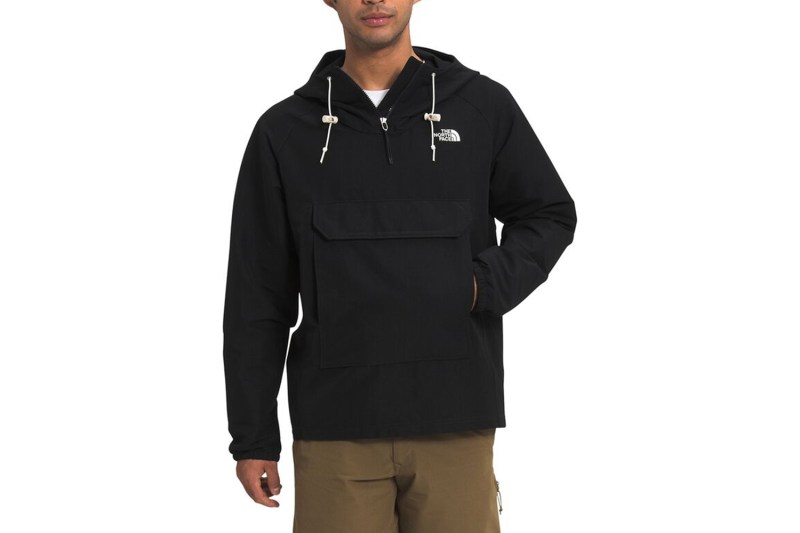
We’re convinced that anoraks are the biggest trend in jackets this year, and it is easy to see why. The North Face’s version is very lightweight, water-repellant, and made to dry very quickly if it does get wet. Another great feature is that the jacket blocks harmful ultraviolet rays up to 50+ for added sun protection. It’s a particularly helpful feature for those in sunny destinations such as coastal or desert trips. When you are not using it, the anorak packs down into a small pouch for easy storage. It really is a well-designed packable jacket for casual use that doesn’t require too many technical details.
Marmot Men’s PreCip Eco Anorak
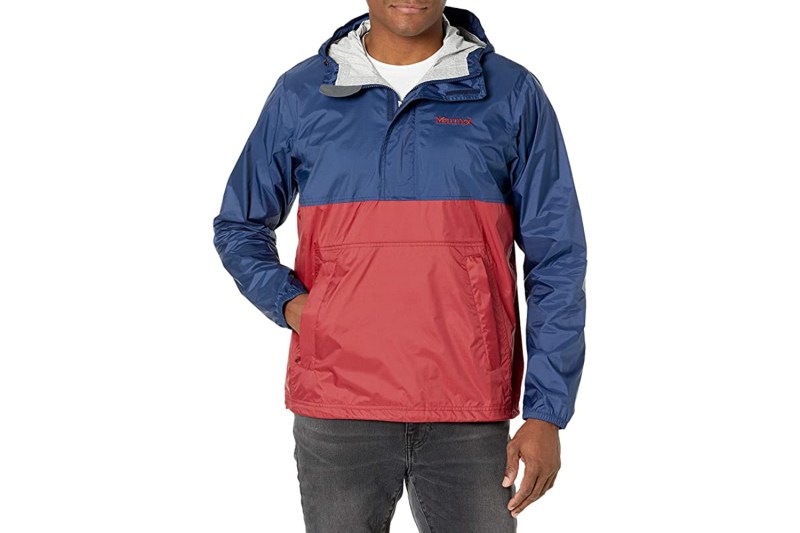
Another great anorak option comes from Marmot. Made with two and a half layers of recycled waterproof, breathable fabric and taped seams, this anorak is designed to handle all kinds of weather well. The loose-fitting jacket is ultra-lightweight and stuffs into its own pocket for storage. The jacket includes an affixed hood, elastic cuffs, and a drawcord hem to seal water out when you need to. It’s a no-brainer to have on hand for unexpected showers or an added layer of warmth at the end of a hike.


